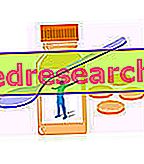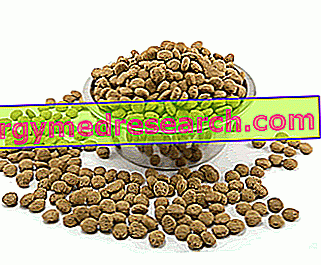Generality
The hexavalent vaccine is so called because it confers immunity against 6 infectious diseases, which are: diphtheria, tetanus, pertussis, poliomyelitis, hepatitis B and Haemophilus influenzae type B.

What is the hexavalent vaccine?
The hexavalent vaccine is the vaccine that - typically carried out during the first 12 months of an individual's life (so at an early age), aims to prevent as many as 6 infectious diseases - which are: diphtheria, tetanus, pertussis, poliomyelitis, hepatitis B and Haemophilus influenzae type B.
In Italy, the hexavalent canonically practiced vaccine is known as Infanrix hexa .
The hexavalent vaccine is the combination - in a single preparation - of as many as 6 vaccinations.
Diphtheria
Diphtheria is a serious and infectious infectious disease caused by the bacterium Corynebacterium diphtheriae .
In general, diphtheria causes severe inflammation of the upper respiratory tract (nose, throat, larynx and trachea), with potentially lethal consequences (death from suffocation); more rarely, diphtheria limits itself to causing an easily curable inflammation of the skin.
Risk of suffocation apart, the most common form of diphtheria (ie the one that causes inflammation of the upper respiratory tract) is to be considered an extremely serious condition, also due to its ability to produce a very dangerous toxin, which can cause damage to the system nervous (eg: injury to the nerves that control breathing), heart (eg, myocarditis) and kidneys (kidney failure).
Tetanus
Tetanus is a severe and acute infectious disease caused by the spores of the bacterium Clostridium tetani, which affects the nervous system and produces characteristic muscle spasms.
Responsible in 2015 for 209, 000 cases of infection and 59, 000 deaths around the world, tetanus is not a contagious disease (so those who do not transmit it to healthy people they come into contact with).
Generally, tetanus is the result of penetration into a cutaneous wound of the responsible bacterium - namely Clostridium tetani - which resided on the object that caused the cutaneous wound itself.
Beyond the muscle spasms, those suffering from tetanus also manifest: fever, profuse sweating, headache, problems with swallowing, hypertension and tachycardia.
Pertussis
Caused by the bacterium Bordetella pertussis, pertussis (or whooping cough ) is an acute and very contagious infectious disease that affects the respiratory tract and the lungs.
The typical symptom of pertussis is an intense and persistent cough, which in the sick subject causes real crises lasting a few minutes.
Pertussis is dangerous especially for infants and children; in these subjects, in fact, it can cause breathing difficulties that can lead to death.
Polio
Polio is an infectious disease due to a virus known as Poliovirus .
Acute and very contagious, poliomyelitis is almost always a mild infection, asymptomatic or weakly symptomatic; however, in some rare fringes (specifically, when the poliovirus invades the central nervous system), it may be responsible for phenomena of flaccid paralysis with a fatal or highly invalidating outcome.
The lack of a cure for polio obliges patients to wait for the natural course of the infection, in the hope that the responsible viral agent will not reach the brain and spinal cord.
Hepatitis B
Hepatitis B is a particularly contagious infection, the trigger of which is the so-called HBV or " hepatitis B virus ".
Transmissible through the blood or body fluids (eg saliva, sperm, vaginal secretion, etc.) of an infected person, hepatitis B mainly affects and damages the liver (hepatitis means "inflammation of the liver"), sometimes resulting in very serious complications such as: liver cancer, liver cirrhosis and / or liver failure.
Haemophilus influenzae type B
Haemophilus influenzae type B is the fruit of the infectious process triggered by the homonymous bacterium: Haemophilus influenzae type B or Haemophilus influenzae B.
Generally, this bacterium is not very invasive and is responsible for mild infections in the ear or respiratory tract; more rarely and especially in younger individuals, it assumes the characteristics of an aggressive micro-organism and causes serious diseases such as meningitis, septicemia, pneumonia, pericarditis, septic arthritis, osteomyelitis, epiglottitis or cellulitis.
Indications
The hexavalent vaccine is a practice recommended / recommended at an early age, to be precise below the year of life.
Administration
For subjects under one year of age (ideal candidates), the administration of the hexavalent vaccine takes place by means of 3 intramuscular injections, practiced in the antero-lateral region of the thigh at three specific moments: at the third, fifth and twelfth month of life.
Recalls: for which diseases and when are they expected?
The use of the hexavalent vaccine, in subjects below the year of life, involves some "recalls" (ie the repetition of vaccination for a given disease or a series of diseases after some time, due to a loss of immunity) .
The references in question are:
- The call at the age of 6, against diphtheria, tetanus, pertussis and poliomyelitis;
- The recall at the age of 14, against diphtheria, tetanus and pertussis;
- The decennial recall (after the recall of 14 years), once again against diphtheria, tetanus and pertussis.
As readers will have noticed, neither hepatitis B nor Haemophilus influenzae type B is mentioned in the list of references. this is due to the fact that, in order to receive immunity from the aforementioned diseases, the hexavalent vaccine, practiced during the first year of life, is sufficient.
Hexavalent and mandatory vaccine in Italy
In Italy, the hexavalent vaccine has become a mandatory practice in all respects on July 28, 2017, when Italian law extended the obligation to vaccinate also against pertussis and Haemophilus influenzae type B, which, up until the previous day the date indicated above, were the only infections (of the 6 from which the hexavalent vaccine is immune) not subject to the aforementioned obligation.
In light of the above, therefore, until the end of July 2017 the hexavalent vaccine could not properly be considered a mandatory practice, as for some of its vaccinations there was still no obligation to carry them out.
Composition
Like any vaccine, even the hexavalent one contains:
- a component defined as "active", which in this specific case serves to guarantee immunity against diphtheria, pertussis, tetanus, poliomyelitis, hepatitis B and Haemophilus influenzae type B;
- a component classified as "auxiliary", which consists of the so-called excipients.
Active component: what does it contain?
The active component (or active ingredient) of the hexavalent vaccine contains 6 elements, which are particular portions of the pathogens triggering the 6 aforementioned infections.
Going into details, these 6 elements are:
- The so-called diphtheria toxoid, which defends from diphtheria;
- The recombinant surface antigen of hepatitis B virus, which defends against hepatitis B;
- The polysaccharide of Haemophilus influenzae type B, which protects against Haemophilus influenzae type B;
- Pertussis antigens pertussis toxoid, filamentous hemagglutinin and pertactin, which render immune to Bordetella pertussis ;
- The inactivated virus of poliomyelitis PV1, PV2, PV3, which defends against poliomyelitis;
- Tetanus toxoid, which protects against tetanus.
It is important to point out that the aforementioned 6 elements have undergone a laboratory treatment, such that they are in no way able to cause the infectious diseases corresponding to the pathogenic agent to which they belong.
Auxiliary component: what are the excipients?
The excipients are substances that complete a pharmaceutical preparation, without having any therapeutic role.
In the case of the hexavalent vaccine, the main excipients are:
- Neomycin or pilomyxin B;
- Anhydrous lactose;
- Sodium chloride;
- Medium 199 (which in turn includes amino acids, mineral salts and vitamins).
Remember that ...
The excipients present in the pharmacological preparations are not negligible, as they can cause allergic reactions.
operation
The hexavalent vaccine protects against diphtheria, pertussis, tetanus, poliomyelitis, hepatitis B and Haemophilus influenzae type B, because its active content stimulates the immune system (of the person to whom it is administered) to produce antibodies against pathogens responsible for the aforementioned infections .
Adverse effects
The hexavalent vaccine is normally well tolerated ; however, it can happen that, in certain subjects, it gives rise to problems that can be qualified with the name of side effects or adverse effects .
Possible side effects of the hexavalent vaccine include:
- Redness and pain at the injection site;
- Fever in the first 48 hours following vaccination. To prevent or treat this side effect, doctors recommend paracetamol;
- Appearance of a small nodule at the site where the injection took place;
- Loss of appetite, irritability, drowsiness or sleep disturbance in the first 24 hours after vaccination;
- Allergic reaction against one of the vaccine components. More than a side effect, it is a complication that, fortunately, takes place very rarely.
In general, subjects with an allergy to the hexavalent vaccine manifest this problematic, with symptoms and characteristic signs, after 15-30 minutes from the injection.
Symptoms and signs of allergic reactions caused by the hexavalent vaccine
Typical symptoms of an allergic reaction to the hexavalent vaccine may consist of:
- Itchy rash of the skin;
- Shortness of breath and severe breathing difficulties;
- Swelling of the face;
- Swelling of the tongue.
Contraindications
The hexavalent vaccine has some contraindications; in fact, it is not suitable for:
- Infants who are less than 6 weeks old;
- Subjects who have previously experienced an allergy to one of the components of the hexavalent vaccine;
- Subjects who have previously experienced an allergy against one of the vaccines against diphtheria, pertussis, tetanus, poliomyelitis, hepatitis B and / or Haemophilus influenzae type B;
- Individuals with an ongoing infectious disease (NB: this is a temporary contraindication, which ends at the time of recovery from the aforementioned infectious disease).
Results
The hexavalent vaccine works and, due to the fact of combining 6 vaccinations in itself, it allows to reduce the total number of injections to which children are subjected during their first year of life (remember, in fact, that for these subjects a vaccination process which, in addition to those included in the hexavalent vaccine, also includes those for measles, rubella, mumps and chickenpox)



